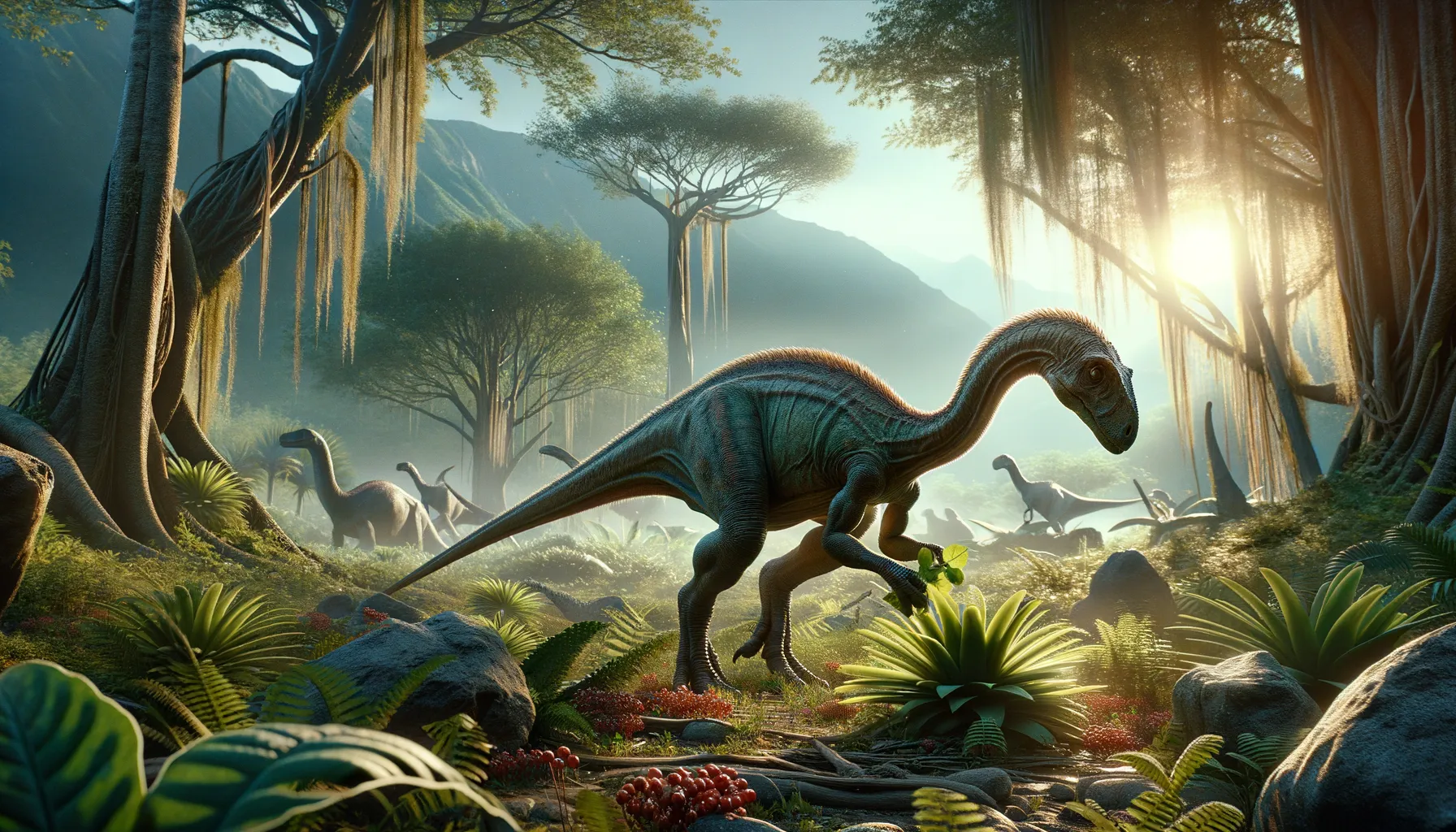
Stormbergia
Swift herbivore of the Late Jurassic era.
Period
triassic
Length
Measured around 3 meters in length.
Height
Stood approximately 1 meter tall at the hip.
Weight
Estimated to weigh around 60 kilograms.
Stormbergia was a small, bipedal dinosaur that roamed the Earth during the Late Jurassic period. This nimble herbivore was equipped with powerful hind legs that perhaps allowed it to move quickly through its habitat. Although it was not amongst the giant dinosaurs, Stormbergia played a vital role in the ecosystem, likely feeding on a variety of plants. The discovery of its fossils in South Africa has contributed significantly to our understanding of dinosaur diversity in the region.
Diet
Stormbergia was a herbivore, feeding primarily on plants. Its diet likely included a variety of ferns, cycads, and other low-lying vegetation common during the Jurassic period.
Hunting
As a herbivore, Stormbergia did not hunt other animals. Instead, it foraged for plant material, using its keen senses to detect and select the best vegetation for sustenance.
Environmental challenges
Stormbergia likely faced various environmental challenges, such as changing climate conditions typical of the Jurassic period. Fluctuating temperatures and periods of drought could have impacted the availability of food resources. Predators also posed a significant threat, requiring constant vigilance and quick reflexes to ensure survival. Periodic volcanic activity might have also altered its habitat, prompting migrations to more hospitable environments.
Speed
Likely moved at moderate speeds for its size.
Lifespan
Possibly lived several decades, like many dinosaurs.
First discovery
Discovered in 1996 in South Africa.
Fun Facts
- Stormbergia is named after the Stormberg region in South Africa, where it was first discovered.
- This dinosaur lived during the Late Jurassic period, about 155 to 150 million years ago.
- Stormbergia was a small herbivorous dinosaur, likely feeding on plants and vegetation.
- It is believed to have walked on two legs, similar to modern birds, hinting at possible evolutionary links.
- Stormbergia was part of the ornithischian group, which also includes famous dinosaurs like Stegosaurus and Triceratops.
- Fossils of Stormbergia have been primarily found in the Harrismith district, providing insight into the ecosystem of that time.
- The discovery of Stormbergia helps paleontologists understand more about dinosaur diversity in Southern Africa during the Jurassic period.
Growth and Development
Stormbergia, like many dinosaurs, likely hatched from eggs. Juveniles would have grown rapidly to avoid predation, transitioning from their vulnerable hatchling stage to more robust forms. The species might have followed a growth pattern that allowed it to exploit different ecological niches at various life stages. Growth rings found in fossilized bones can provide insights into its growth rates and developmental stages.
Habitat
Stormbergia inhabited regions of present-day South Africa during the Late Jurassic period. Its environment was likely semi-arid, featuring a mix of open plains and denser forested areas. The diversity of plant life provided ample food sources for this herbivore. Seasonal changes in the environment may have encouraged migrations to maintain access to fresh vegetation and water.
Interaction with other species
Stormbergia would have interacted with a variety of other species in its ecosystem, both herbivorous and carnivorous. It possibly shared its habitat with other small to medium-sized dinosaurs, competing for plant resources. Its presence also attracted predators, making it an integral part of the food web. Symbiotic relationships with other herbivores might have aided in foraging and protection.
Natural lifespan
Stormbergia's natural lifespan was likely similar to that of other small to medium-sized dinosaurs, spanning several decades.
Reproduction
Stormbergia reproduced by laying eggs, likely in a shallow nest made from vegetation and soil. Parental care may have extended to guarding the nest and maintaining an optimal temperature for incubation. Once hatched, the young might have stayed in family groups for protection as they grew. Seasonal reproduction patterns could have been influenced by environmental conditions to maximize offspring survival.
Social behaviour
Stormbergia may have exhibited social behavior, similar to other herbivorous dinosaurs. Group living could have provided benefits such as protection from predators and more efficient foraging. Communication likely occurred through vocalizations or physical displays to coordinate movements and alert others of danger. Social hierarchies may have existed, impacting access to resources and mate selection.
Fossil locations
Fossils of Stormbergia have primarily been found in South Africa, giving insight into the Late Jurassic ecosystem of the region. These sites have produced valuable skeletal remains, enhancing our understanding of its anatomy and lifestyle. Fossil discoveries have also linked this dinosaur to other species within the southern hemisphere, indicating broader geographic distribution. Continued excavations in these areas may yield further information about its range and ecological niche.
